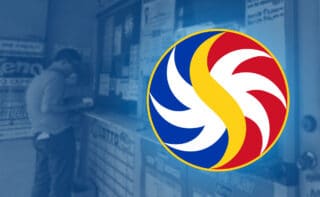MANILA, Philippines–A visiting top executive from New York-based Nasdaq OMX Group sees its proprietary trading technology putting the Philippine Stock Exchange—which will adopt this new platform by mid-2015—in a good position to widen its offering of asset classes in the future.
Adena Friedman, president of Nasdaq OMX’s global corporate, information and technology solutions, also said in an interview with Inquirer during her visit to the PSE on Monday, that this platform had routing and network capability to support seamless cross-border trading of securities if and when PSE joins the Southeast Asian trading linkage.
Nasdaq OMX’s X-Stream trading technology, which used by other 30 clients around the world, is an end-to-end system that handles market transactions from pre-trade to post-trade and has capability to offer multiple asset classes.
Asked about which new asset classes she sees flourishing in this part of the world, Friedman said: “ETFs (exchange traded funds) and futures tend to be an area of great focus across the region in terms of providing additional asset classes and building the infrastructure to support greater derivatives trading and clearing. That certainly is a common theme that we’ve discussed across the region and it’s an area of natural evolution for the exchanges to broaden out and provide futures and options on underlying equities as well on fixed income and commodities.”
In the Philippines, the first ETF— First Metro Philippine Exchange Traded Fund Inc.—debuted last year. The PSE has also been preparing for the launch of a futures product with local equities as underlying instruments.
“So over time as PSE looks at expanding either beyond equities or continue to advance clearing and settlement capabilities, we have the technology that has the foundation to allow them to expand,” Friedman said.
A futures contract refers to an agreement to buy or sell a certain product based on a standardized contract for settlement in the future, hence the name. This product matches the need of hedgers with investors taking speculative positions.
Like mutual funds, ETFs pool funds by selling shares to the investing public. But unlike mutual funds, their prices are quoted real time so investors immediately know how much they are buying or selling their ETF shares for. ETF investors may buy or sell shares through trading participants.
In Southeast Asia alone, Nasdaq OMX also works as a technology provider to the Indonesian and Malaysian stock exchanges, the securities regulators of Malaysia and Singapore, as well as the Philippine Dealing & Exchange Corp. (PDEx), Friedman said.–Doris C. Dumlao



